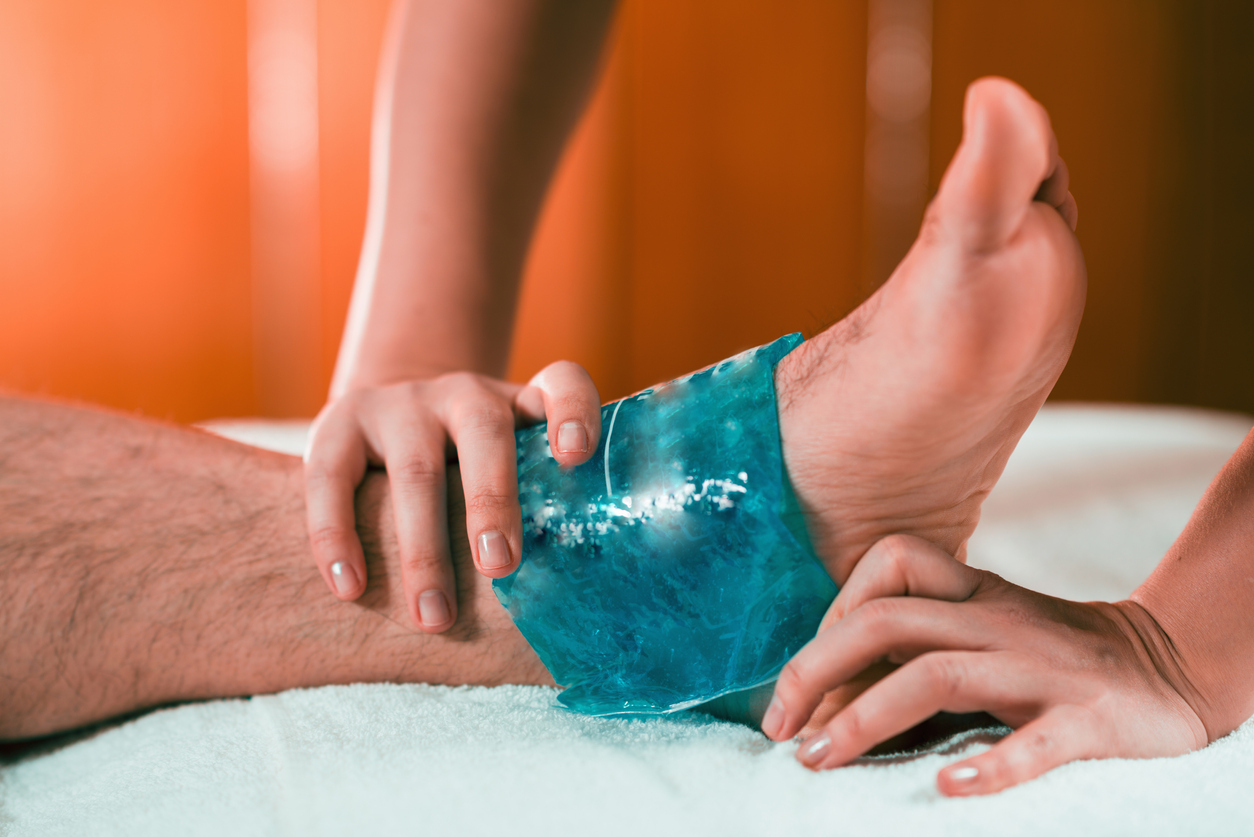One of the most common questions we get asked at our office is whether it is best to use heat or cold to relieve an ache or injury. Both heat and cold therapies have their uses in pain relief. But, you should know when to use heat and when to use ice. Either one applied incorrectly can worsen the problem. So we will cover here the use of heat versus ice.
HEAT
Heat increases blood flow, decreases muscle spasms, and increases range of motion to reduce joint and muscle pain. For the best results, use a warm temperature, not hot. Hot temperatures can burn your skin. The length of time you apply heat depends on the injury. For example, for minor back pain, you may want to use heat for 15-20 minutes.
Types of Heat
There are two types of heat you can apply — moist heat and dry heat. Moist heat can help the heat to penetrate the muscles. It can provide better pain relief than dry heat as well. Dry heat draws out moisture from the body and may leave the skin dehydrated. For these reasons, we recommend moist heat. However, some people feel that dry heat is the easiest to apply and feels the best.
Use heat on:
- Injuries (once any bleeding/swelling has stopped — usually after 24 to 48 hours.)
- Arthritis and other issues that cause joint stiffness
- Chronic aches and muscle spasms
- Sore muscles to stimulate blood flow before a workout.
Here are some heat options:
- Heat wraps: A heat wrap wraps around the lower back and waist. You can wear it against the skin under clothing, which can be more convenient if you have to move around.
- A hot bath, hot tub, sauna, steam bath: These methods help reduce muscle spasm and pain. They also help one relax, which can help reduce pain.
- Hot water bottle: Hot water bottles can stay warm for 20 to 30 minutes.
- Heated gel packs: You can usually heat gel packs in either hot water or microwaves. They tend to say warm for about 30 minutes.
- Electric heating pad:Electric heating pads are dry heat. But their advantage is that when plugged in, they maintain a constant level of heat and they are convenient.
CAUTION! DO NOT apply HEAT when there is swelling! The reason for this is that when the body is injured, it increases fluid and white blood cells into the injured area. If you apply heat to the swelled area, it will increase the fluid even more into the injured area, which will cause more swelling and pain.
ICE
Ice reduces the flow of blood to the injured area, which reduces pain, swelling, and inflammation. You want to use ice on injuries that have occurred in the last 24 hours and to areas that are swollen, inflamed, or bruised.
Use ice on:
- Injuries that have occurred in the last 24 hours.
- Areas that are swollen, inflamed or bruised
- A recently strained pulled or sprained muscle and joints that are swollen and warm to the touch.
- Muscles to relieve wear and tear on the body after a workout.
Here are some icing options:
- Ice Packs: You can find ice packs or instant cold packs at your local pharmacy or shop for them on-line. Medical Daily gives their ice pack top picks for 2020.
- Frozen peas and corn: If you don’t have an ice pack handy and you need a quick solution, a bag of frozen peas or corn will do.
- Frozen water bottles: Frozen water bottles work well for injuries to the foot, such as plantar fasciitis.
- Ice Therapy Machines: There are different types of ice therapy machines. For example, Cryocuff circulates ice water around the injured area while also using compression to reduce swelling. It works well for most injuries and healing after surgery.
CAUTION! DO NOT apply ICE to tight, stiff muscles! It can prevent them from relaxing and therefore cause more pain.
Another word of caution: make sure to follow all instructions on whichever product you use. A person can receive burns from applying too much heat or cold for too long a period. Remove the heat or cold 15 to 20 minutes after each treatment period.
Conclusion
Both heat and cold therapies can help relieve pain and speed recovery. You must apply the correct one to your situation. However, neither heat nor cold therapies are substitutes for a full treatment of the injury. We offer all-natural treatments for acute injuries and chronic pain. If you need to make an appointment, contact us now.
Sincerely,
Dr. Craig Strickland, DC
Carolina Rehab & Physical Medical Center

